Queen Elizabeth’s funeral: Final farewells to a symbol of stability in tumultuous times
The response to the Queen’s death a week ago has been nothing short of convulsive. As ties to the Crown loosen, people still find comfort in ancient rituals.
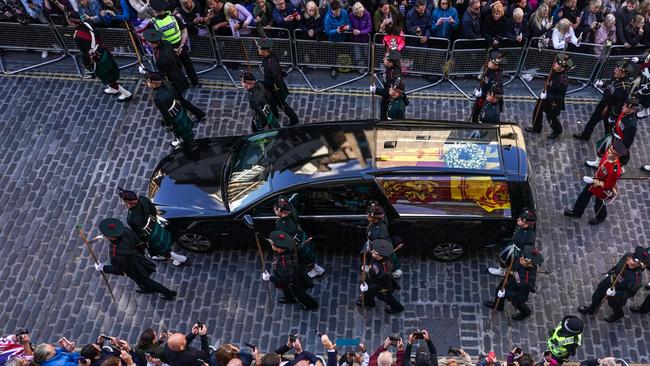
The country’s, indeed the world’s, response to her death on September 8, the dramatic public announcement made against the backdrop of a double rainbow behind Buckingham Palace, has been nothing short of convulsive.
On Monday, at the first state funeral since the farewell to the great statesman Winston Churchill in 1965, there will be the wiping of tears, a collective gasp of sorrow, a deep intake of breath and a series of sad goodbyes to the last world leader linked with that most calamitous time, World War II. And then Elizabeth the Second, by the Grace of God Queen of Australia and Her Other Realms and Territories, Head of the Commonwealth, Defender of the Faith, will be gone.
The entire United Kingdom, whose monarchical authority has passed immediately to King Charles III, is in deep mourning. The impact of the Queen’s death should not be underestimated. Fragile ties to the British monarchy, kept in place because of a deep sense of personal allegiance to the Queen, have been severed. From Scotland to Antigua, constitutional bedrocks are shifting.
Yet, at the same time, people are comforted by the ancient rituals and the tender care and precision taken to move the late Queen from the Scottish Highlands of Balmoral Castle to London. This cavalry and chivalry that have accompanied kings and queens at their most vulnerable – the beginning and end of their reigns – since times before even William the Conqueror have helped solidify the status of the new King.
That will be obvious at Queen Elizabeth’s funeral, which will include three processions: one into Westminster Abbey; one after the funeral service back past Buckingham Palace, on to the Wellington Arch; and another along the Long Walk to Windsor Castle, as military personnel lining the route produce their snappiest salutes.
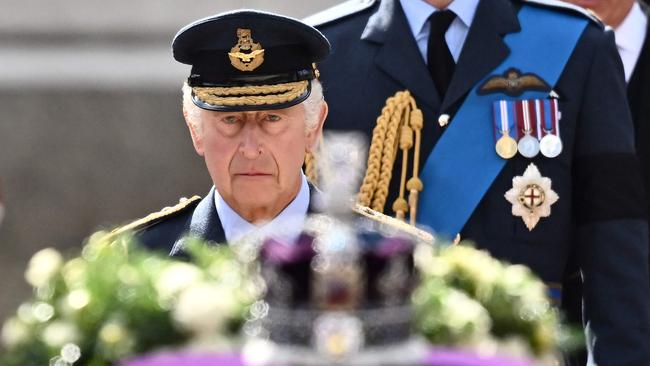
Most people are for the first time exposed to medieval trumpeting and heralding of proclamations, the protocols of military dress and salutes, and the deep reverence of the lying in state, guarded by the Household Division and the Yeomen of the Tower of London.
But this is a complicated time in the UK, riven by political and economic tumult. The Queen was a symbol of stability and fortitude at times of such crises for seven decades. Now that she has gone, where will that bulwark come from?
People who didn’t think they would cry, did. The sweet camaraderie of hundreds of mourners who stood in the rain overnight to be first in line to pay respects at the Queen lying in state under the huge hammer beams of Westminster Hall collapsed to sorrow when they walked past the Queen’s coffin draped in the Royal Standard.
The Imperial State Crown sparkled under a shaft of the sunset filtering through stained-glass windows as people wiped tears and clasped hands.
This has been such a long farewell, one could only think of what the Queen’s husband of 74 years, Prince Philip, would have said. He was impatient and blunt when a photographer was taking a family snap, telling him “just get on with it” and his funeral in April last year was a relatively modest affair, scaled back even more because of the coronavirus pandemic.
But the Queen herself had overseen the smallest detail of every step of her own goodbye.
From her selection of hymns in the service we will finally find out which her favourite ones really were. She once said that she didn’t want to say because it would mean everyone would feel compelled to include them every time she stepped inside a church.
When I met the Queen 10 years ago, she stood elevated on a small platform inside Buckingham Palace. Her footman introduced my name and announced that I was from Australia. She dug into her lifelong repertoire of questions: “Have you had a long journey?” I compared notes with the other guests and she had asked different questions of all of us.
I would see her on Christmas morning at Sandringham, arriving in her Rolls-Royce and hearing her and other royals sing hymns and carols in St Mary Magdalene Church, after which a very long line of young children, some curtsying excitedly, would present her with flowers. She would smile broadly and indulge them.

The stories about the Queen have told of her astute mimicking – something her daughter Princess Anne has inherited – and her sense of humour behind the scenes.
The time she told some American tourists she had stumbled upon in the Highlands – telling them “He has met the Queen” and pointing to her bodyguard – is now a well-worn anecdote.
John Dauth, the Australian diplomat who was the Australian high commissioner to the UK from 2008 to 2013 and earlier in his career was seconded to Buckingham Palace as press secretary, said the Queen was always very kind and generous, wanting to put nervous guests at ease, often encouraging people to pat or feed the corgis.
But her remarks, he said, were sometimes delivered in a blunt way: “There was particular warmth and charm, but she was direct, no treacle.”
When Dauth was working in the Queen’s household in Buckingham Palace in 1977 the footmen delivered him four cardboard casks filled with “Botany Bay” wine from a friend in Sydney and he dutifully passed them on to the master of the household.
Later that year he was invited to Balmoral Castle for the weekend. “On the Friday night we had martinis and dressed down just casually, in black tie, and we went to dinner with the family. I remember the Brabourne girls (cousins of the Queen) being there and there was the menu in French and the wine list and the musical scores that the orchestra was to play. On one card it just said Botany Bay White, Botany Bay Red. I thought “Jesus”, and then there was a lot of hilarity and jokes by everyone at my expense.
“I went back to London and the Queen’s (master of the household) Vice-Admiral Peter Ashmore had written a note to my friend, saying the Queen has commanded me to thank you for the loyal gift of wine and it was served at Balmoral last weekend and Lady Brabourne particularly liked the red, blah blah, blah.
“Of course my mate then rang me in a dither, saying, ‘Jeez, that bloody wine was for you, not the Queen, if I had known it would go to the Queen I would have sent the good stuff.’ ’’
These days in London it is particularly difficult to find anyone who is not enamoured of the Queen, who is accorded nothing but the deepest respect. That is very different, of course, to a complete acceptance of King Charles.
In towns on the South Downs, villagers in Ditchling have dressed in black since her death. Royalist signs abound: memorials to the Queen are dotted from real-estate windows to the Tube to giant billboards. It has become a running joke about the extent of closures on Monday “out of respect for the Queen”.
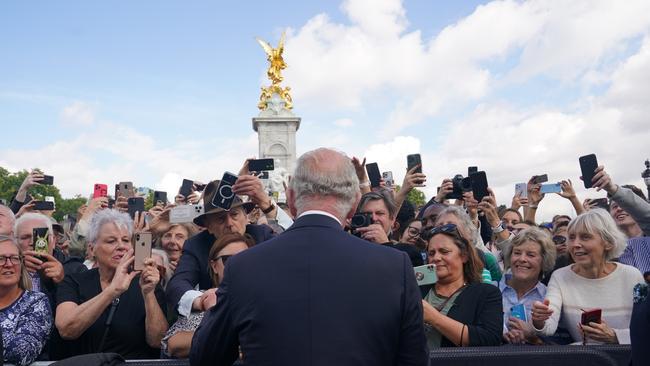
One popular holiday camp initially expected mid-holidaying families to check out on Sunday night and then recheck in on Tuesday morning. Heathrow airport has rescheduled flights so that it is quiet overhead during various memorial events, including the day of the funeral, the Met Office will only post a daily weather update, and one supermarket turned off its music and in store announcements for the entire mourning period. On this one last day the Queen’s death has united the nation.
As for signs of dissent, it is there, but hushed up pretty quickly by the authorities. Police have been treading a confused line. The days of sending people to the Tower of London for treasonous behaviour have long disappeared.
So is disrespect allowed? Can people protest that the King is unelectable; that he will pay none of the hated inheritance tax on the Queen’s estate? Or what about protesters questioning whether William will pay income tax on the £1bn ($1.7bn) Duchy of Cornwall estate, a vast landholding including the Oval cricket ground which generates more than £23m a year without paying any corporation tax?
In Scotland this week a 22-year-old heckler was arrested. His alleged crime? He yelled “Andrew, you’re a sick old man” at Prince Andrew during the procession up the Royal Mile in Scotland.
The same day, four police officers arrested a man who had waved an A4 sheet of paper with “Not my King” written on it. Metropolitan Police Federation chairman Ken Marsh has admitted: “It was clear that some of my colleagues weren’t aware what people can and can’t do in terms of holding up pieces of paper.”
The British public instinctively knows the difference between disrespect to an elderly much loved stateswoman and personal feelings on the monarchy, and the law and freedom of expression, yet the official reaction has been heavy-handed.
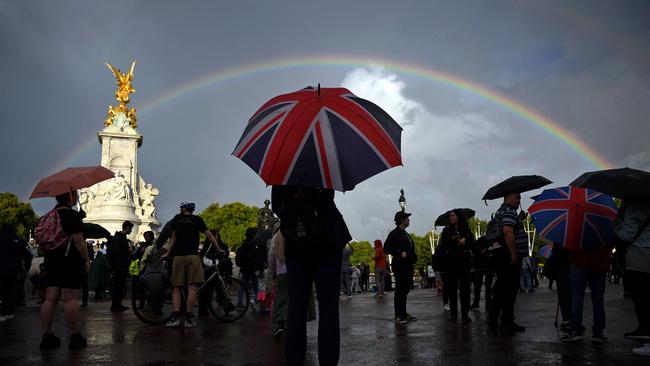
The National Federation of Fish Fryers was quick to cut one fishmonger from their organisation after she posted “in extremely bad taste and completely against all of the values our organisation and industry hold dear”.
Fish and chip shop owner Jaki Pickett, from Muir in Ord, Scotland, filmed herself with champagne celebrating the Queen’s death and holding up a sign with a comment referring to the code name passed in diplomatic circles to indicate her death.
“Lizard Liz dead, London Bridge has fallen,” she wrote on a billboard, only later to find her shop the target of vandalism.
During the past week sport has wrestled with the appropriateness of playing at all during a time of national mourning.
Officials at the Football Association cancelled all games over the weekend immediately after the Queen’s death and the England cricket Test against South Africa was paused for a day, although crowds were limited in the number of beers they could buy as officials feared the outfield stands might become too rowdy.
The true test of the national mood, the atmosphere at football matches, has reinforced longstanding divides.
Liverpool’s controversial past with the establishment saw their fans boo the national anthem during a recent FA Cup final. Yet that tough crowd were more restrained, at the urging of coach Jurgen Klopp, with just a smattering yelling abuse during the moment of silence for the Queen on Wednesday.
Rangers, the Protestant loyalists in Scotland, arranged one stand in the Union flag colours with a silhouette of the Queen formed using coloured cards held up by fans during a Champions League clash and even defied the European football bosses to sing a rousing God Save the King.
On the other side of Glasgow, Celtic, who have large Catholic support, displayed banners during their match against Shakhtar Donetsk that declared: ‘F--- The Crown’ and ‘Sorry for your loss Michael Fagan’, a reference to the Buckingham Palace intruder who found his way into the late Queen’s bedroom 40 years ago.
King Charles is not immune to these angry undercurrents of simmering social issues, which will intensify with the country held hostage to soaring energy costs and people’s struggle to both eat and heat their homes. He faces increasing pressure to keep the 15 realms, including Australia, amid sharp shifts towards republicanism, but in his earliest days he has shown the Commonwealth is important to him.
In the Caribbean nations there are the additional concerns about slavery reparations.
Closer to home, in his own household, Clarence House, staff were given redundancy notices three days after the Queen’s death. Many will find work in other royal households, but some won’t. It has long been Charles’ wish for a far slimmer, more efficient monarchy.
In that regard, Charles has already faced down the fiercest objections from within his own family, with exiled Prince Andrew still unaccepting of his sidelining after paying nearly $20m to settle a civil dispute with Jeffrey Epstein’s sex slave Virginia Giuffre.
The King’s second son, Prince Harry, is outraged that his children Archie, 3, and Lilibet, 1, won’t be given His and Her Royal Highness titles (which requires providing a higher level of more expensive security), although they are to be anointed Prince and Princess. On both these family issues Charles has read the room and won’t commit additional public money to keep a brother or a son appeased. Crucially he has taken advice on these concerns from his heir, the Prince of Wales.
And so the nation moves into the new Carolean era, one that will be much shorter in length and perhaps sharper in focus. Just how rocky it is, time will tell.
Charles signified in his first speech he would step aside from key interests to focus on being a King, interpreted to mean his meddling days are over. Long live the King.


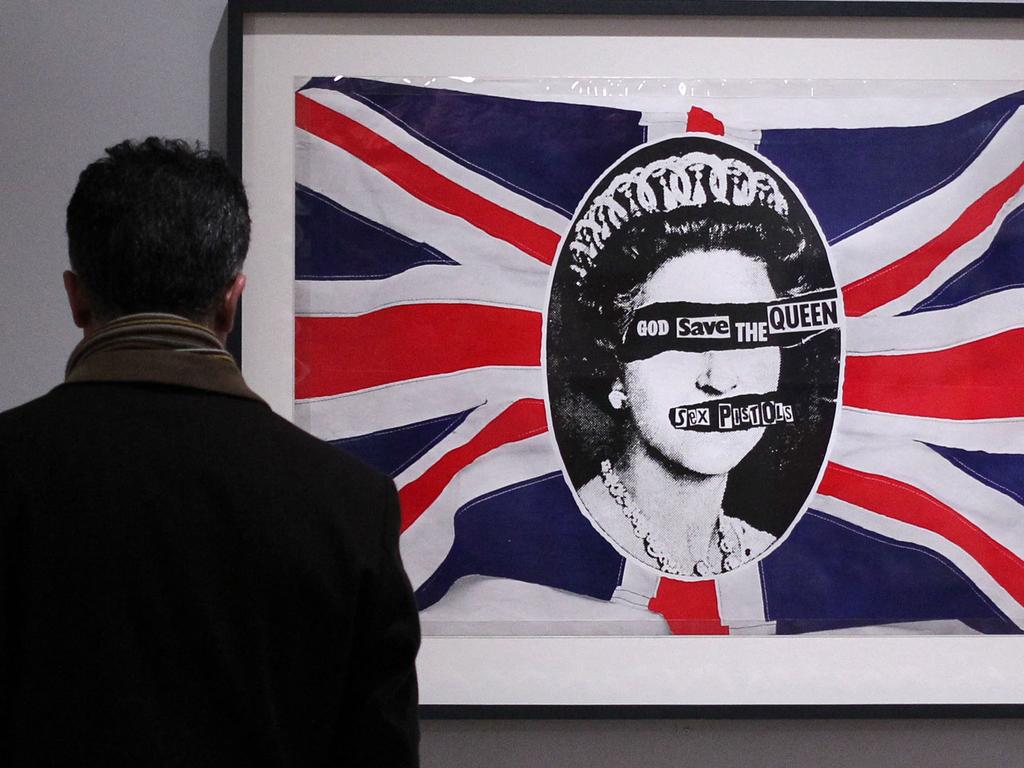
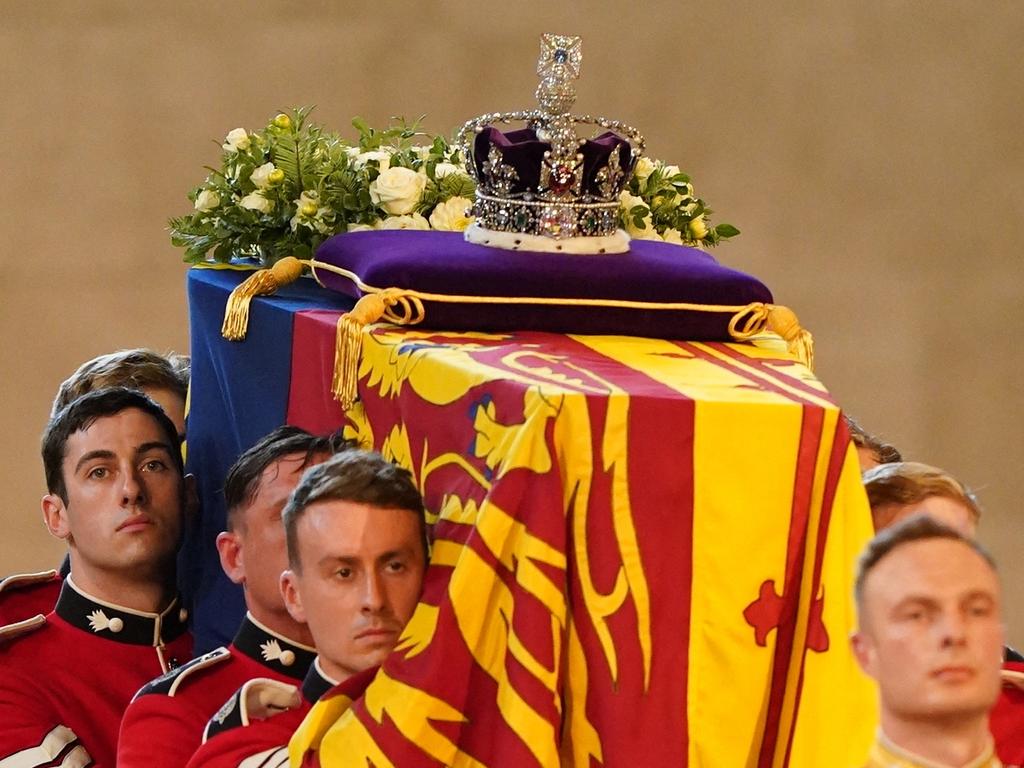
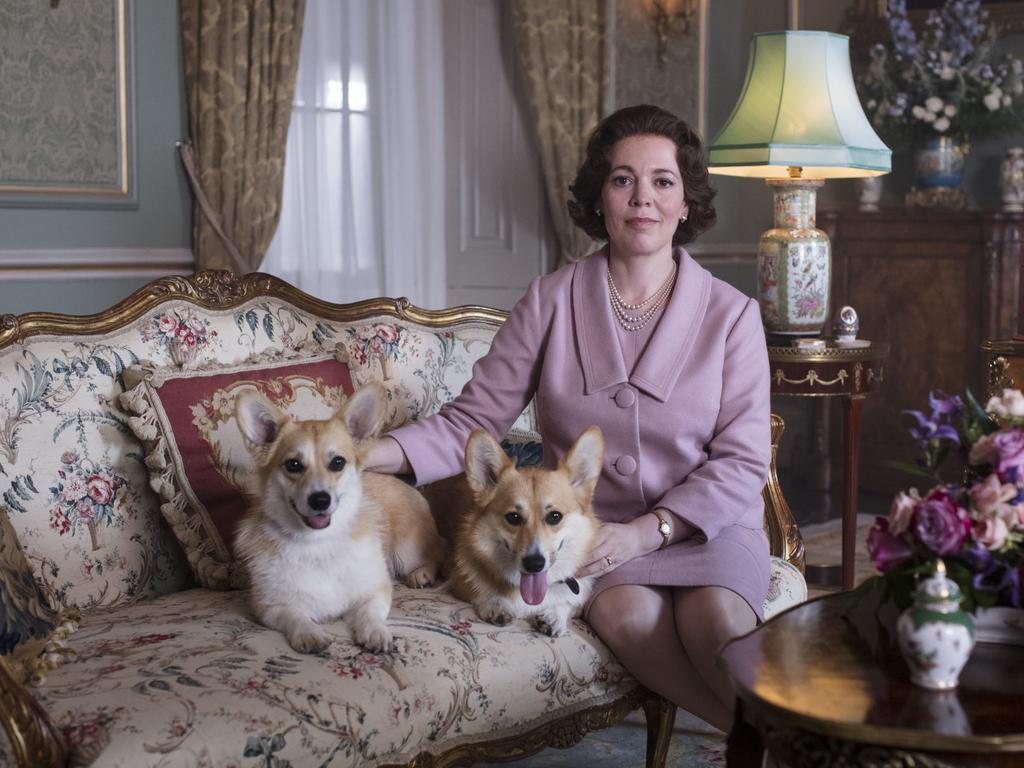
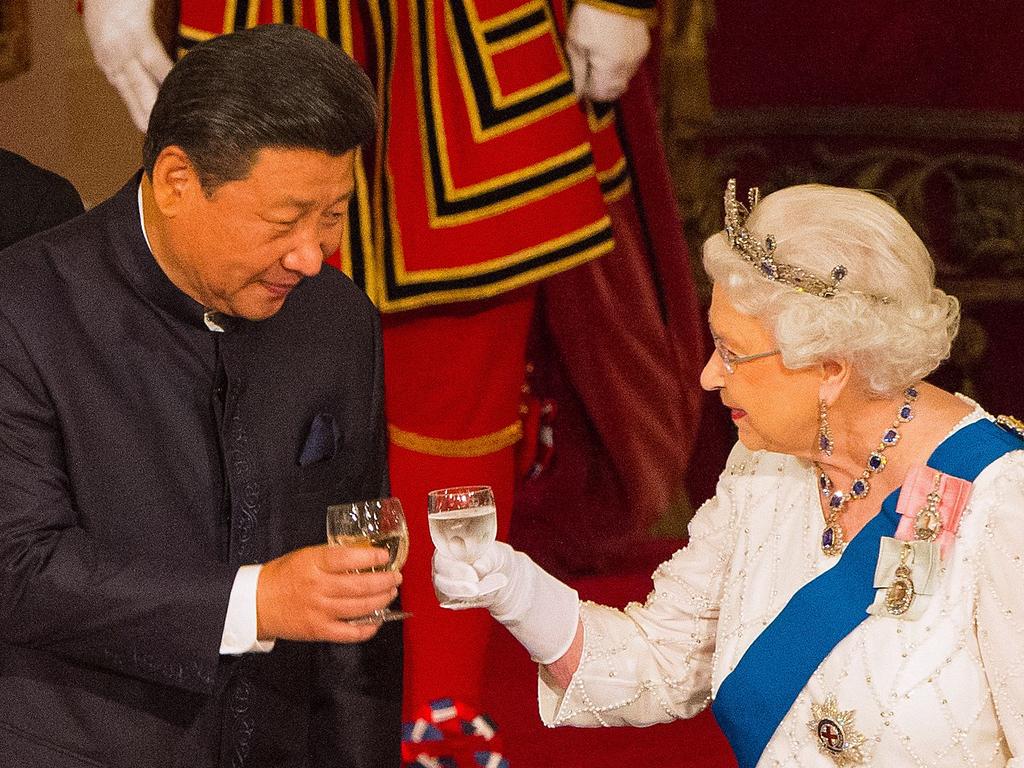
When Queen Elizabeth II’s coffin was drawn by seven black horses, to the beat of a single drum, to lie in state inside Westminster Hall on Wednesday, it felt impossibly momentous: the sharpest punctuation mark in the 1000-year history of the British monarchy.